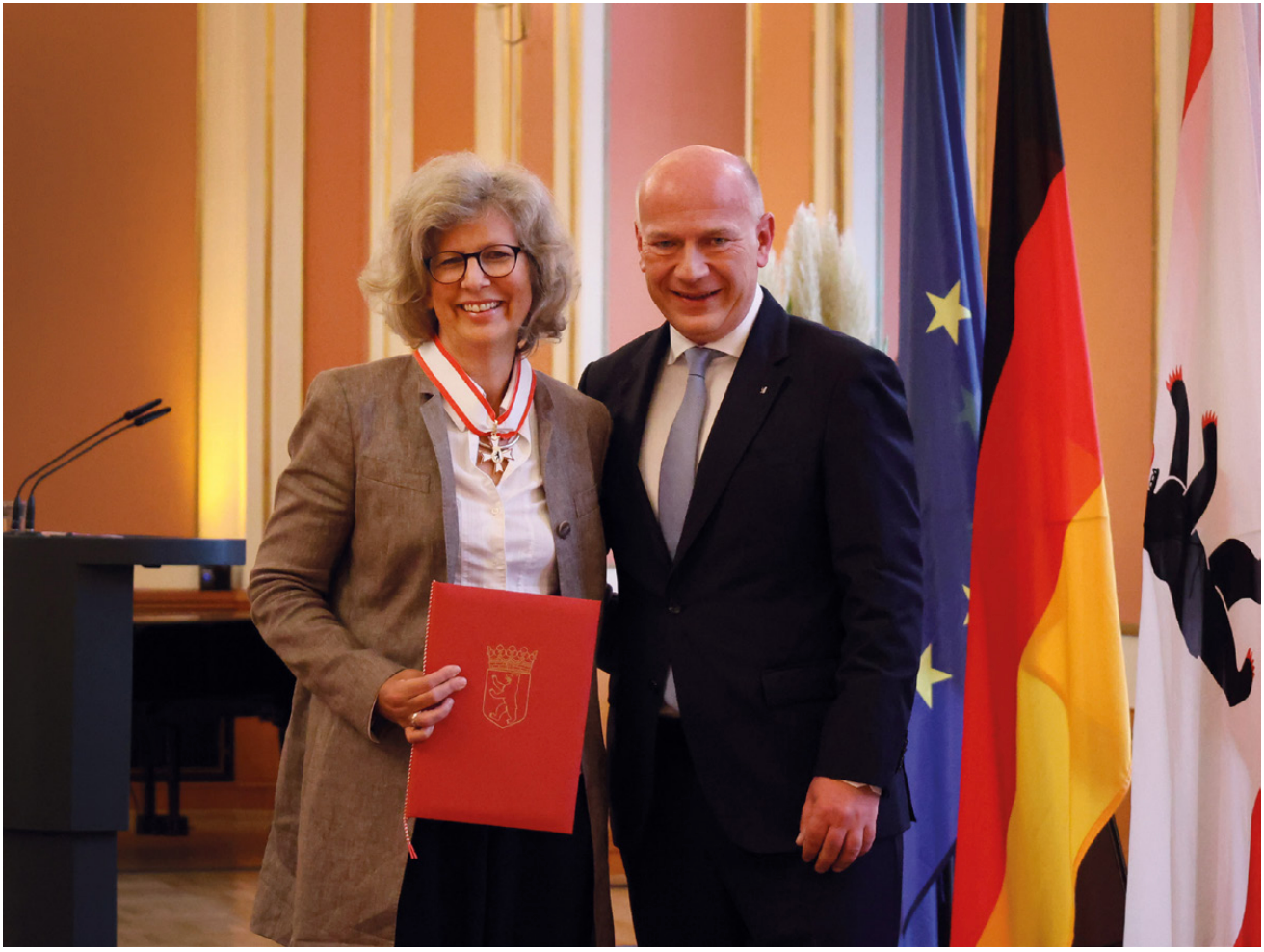The Evolution of Breath Analysis
The Column spoke with Ilaria Belluomo from Imperial College London, UK, about her research in breath analysis, specifically her work into a non‑invasive breath test that can be used to detect colorectal cancer using gas chromatography–mass spectrometry (GC–MS). She also discusses the use of selected ion flow tube mass spectrometry (SIFT-MS) for the analysis of volatile organic compounds (VOCs) in breath.
Q. You have recently published a paper on a non-invasive breath test that can be used to detect colorectal cancer (1). What were your findings? What role did gas chromatography–mass spectrometry (GC–MS) play in this research?
A: I work in Professor George Hanna’s group and the main focus of our research is the development of a non-invasive breath test for the diagnosis of multiple diseases. Colorectal cancer has, unfortunately, a low survival rate if discovered at a late stage; if it is detected early, it can be curable. The survival rate dramatically drops once at stage 4, therefore improvement in the diagnostic path is needed, and the development of a non‑invasive breath test has the potential to save many lives. In this study, together with Dr Georgia Woodfield, my first PhD student at Imperial, we built a model based on a panel of 14 breath volatile organic compounds (VOCs) and body mass index, which was able to discriminate cancer patients from controls. A validation study is currently in the recruitment phase to refine the detection model for colorectal cancer.
GC–MS is currently the gold standard technique for breath VOC analysis. This technique is essential in these discovery studies, where a deep untargeted analysis is required to also detect low-concentration VOCs that are usually overlooked.
Q. What were the main analytical challenges you had to overcome?
A: The most challenging aspect was the number of samples. A total of 1432 patients were recruited and included in the final results, each of which had replicates and blanks. This generated a huge amount of instrumental and meta data, such as demographic data, which was challenging to align and process.
The compound identification therefore took a significant amount of time. We checked each one carefully, not only from a chemical point of view but also a biological one. It is easy to find biomarkers, the challenge is understanding which one has a “biological meaning” and is related to the disease you are characterizing.
Q. You are currently involved in a project called Volatile Non-Invasive Biomarkers of Epileptic Seizure (VIBES) that will determine whether breath and sweat analysis can be used to detect whether someone has had an epileptic seizure (2). What stage is this project at?
A: We are currently in the recruitment stage. Around 30% of people who take anti‑epilepsy drugs are not responsive to therapy. A great percentage of these patients are misdiagnosed with epilepsy because there are many other diseases causing faints and paroxysmal movements. The most accurate method to diagnose epilepsy is to perform an electroencephalogram (EEG) during a seizure, but this is not always possible in emergency settings due to seizure unpredictability.
This project is being carried out in collaboration with the team of Professor Matthew Walker and Dr Eleonora Lugarà at the University College London (UCL) and the National Hospital for Neurology and Neurosurgery telemetry unit. Patients who have drug-resistant epilepsy and are eligible for surgeries are voluntarily hospitalized for a few days to have a more detailed investigation of their epilepsy focus. During the hospital admission, they reduce many anti-epileptic medications and have continuous EEG. This way, if they have a seizure, the continuous EEG will provide a more detailed assessment of their disease state. In this unique setting, we have the opportunity to collect breath samples from patients who agree to be part of our study, before and after a seizure and at set time points. The non-invasive nature of the breath test and the excellent acceptability is important for the sample collection in these delicate moments.
The first aim of this project is to outline a breath profile related to seizures that can be used in the future to discriminate epileptic from non-epileptic ones. The hope is that one day we might be able to understand when a seizure is about to be triggered using just a breath test.
Q. How easy is it to integrate breath analysis into your research? Are there any trade-offs?
A: In my opinion, breath analysis is the future of diagnostic medicine. Invasive techniques are going to be replaced with less invasive ones, to help make quick diagnoses of complex pathologies, such as cancer, that have a survival rate that dramatically depends on diagnosis time. Large population screening is possible only with the employment of fast and well‑accepted techniques, and breath analysis certainly has a place in the future diagnostic landscape. Patients are usually very happy and agree to be recruited to our studies.
However, it is still an evolving field. VOCs were detected for the first time in breath in 1971 by Linus Pauling (3)—just 50 years ago. He found around 200 VOCs, while now more than 1400 different VOCs have been found in breath! This is all thanks to the technological advancement in the mass spectrometry field that has made VOCs detectable at very low concentrations. However, there is still much work to do from an analytical point of view, and also in outlining VOC origins and pathways.
Q. You have also published a paper discussing the use of selected ion flow tube mass spectrometry (SIFT‑MS) for the analysis of VOCs in breath (4). How did this research come about? What does SIFT-MS offer over chromatography?
A: We have a lot of experience in measuring breath VOCs using SIFT-MS, as you can see from the track record of our research group (5–7). In addition, we have collaborated with Professor Patrik Spanel, a pioneer of this technique and my breath research mentor, for over 15 years. We decided to gather all of our knowledge and write a paper about how to standardize VOC measurements on a SIFT instrument to share our methods. Measurement standardization is lacking in the breath research field, and therefore method sharing is much needed.
I think SIFT-MS and GC–MS are complementary techniques for the analysis of VOCs in breath. They have a different role and, depending on the project, the type of samples, and the analysis that needs to be performed, one of them can be preferable to the other. SIFT-MS is very user-friendly in terms of running samples and data analysis. Online measurements give real-time results, and a method lasts around one minute. Quantification is direct, made through known reaction chemistry between compounds and reagent ions, and can be run without an external calibration. SIFT-MS can help to design quick targeted methods, while GC–MS is best if a discovery untargeted analysis needs to be performed, all thanks to the different levels of specificity offered.
In collaboration with the manufacturer, I am also building a version of SIFT that works with thermal desorption (TD). This offers the option to employ SIFT-MS in large-scale multi‑centre studies where the instrument is not on-site, and gains the concentration effect of TD while maintaining a fast analysis time.
Q. In 2022, you co-founded the Academic Women Association (AWA) at Imperial College Faculty of Medicine, which is aimed at building a network to promote female scientists and inspire more women into academia (8). How did this come about? What has the reaction/uptake been like?
A: Since 2019 I have been part of the culture and engagement committee of my university department, the Department of Surgery and Cancer at the Imperial College Faculty of Medicine, in which we promote gender equality, representation of minorities, and staff development, among other things. Every year we gather numbers about gender representation in different roles at Imperial, and it is clear that women are underrepresented in senior positions. Of course, this is not just at Imperial College, but is a problem across academia in general. This small female representation can give the impression that a career in science and academia can be difficult for women to pursue. We are more aware of this problem nowadays, but we are only at the beginning of a real change. Together with some colleagues from the Culture and Engagement Committee, and with the strong support of Professor Hanna, we started the AWA. Our aim was to establish a network of academic women and provide a safe space to discuss topics such as career progression, caring responsibilities, sexual harassment, and mental health. We organize events gathering women from different career levels to provide young women scientists with role models and show that a career in science is possible to pursue. We have already held three events that have been very successful in terms of number of participants and thought‑provoking discussions. All our events are in person and are not recorded or live-streamed to give the feeling of a safe space, and I think it has been really successful. People have felt able to open up and share very intimate thoughts. We are currently organizing a further event in which we will discuss women’s health in the research workplace. I hope every university considers such initiatives to promote women in science, as I think it is very beneficial. The day before the first AWA event I found out the baby I was expecting was a girl. I felt even more motivated!
Q. Is there anything further you would like to add?
A: Everything that I have been able to do in recent years, from scientific projects to AWA, everything I have learned, I must give credit to Professor Hanna and the team. The environment in which I work is stimulating and friendly. Personal and professional growth are only possible when you go to work every morning with a smile on your face.
References
(1) Woodfield, G.; Belluomo, I.; Laponogov, I.; Veselkov, K.; et al. Diagnostic Performance of a Noninvasive Breath Test for Colorectal Cancer: COBRA1 Study. Gastroenterology 2022, 163 (5), 1447–1449. DOI: 10.1053/j.gastro.2022.06.084
(2) Epilepsy Research Institute UK; Research Project. https://epilepsy-institute.org.uk/eri/research/research-portfolio/investigating-breath-testing-and-sweat-analysis-to-help-diagnosis/ (accessed 2023-10-12)
(3) Pauling, L.; Robinson, A. A.; Teranishi, R.; Cary, P. Quantitative Analysis of Urine Vapor and Breath by Gas-Liquid Partition Chromatography. Proc. Natl. Acad. Sci. USA 1971, 68, 2374–2376. DOI: 10.1073/pnas.68.10.2374
(4) Belluomo, I.; Boshier, P. R.; Myridakis, A.; Vadhwana, B.; et al. Selected Ion Flow Tube Mass Spectrometry for Targeted Analysis of Volatile Organic Compounds in Human Breath. Nat. Protoc. 2021, 16, 3419–3488. DOI: 10.1038/s41596-021-00542-0
(5) Kumar, S.; Huang, J.; Abbassi-Ghadi, N.; et al. Selected Ion Flow Tube Mass Spectrometry Analysis of Exhaled Breath for Volatile Organic Compound Profiling of Esophago-Gastric Cancer. Anal. Chem. 2013, 85, 6121–6128. DOI: 10.1021/ac4010309
(6) Markar, S. R.; Wiggins, T.; Antonowicz, A.; et al. Assessment of a Noninvasive Exhaled Breath Test for the Diagnosis of Oesophagogastric Cancer. JAMA Oncol. 2018, 4, 970–976. DOI: 10.1001/jamaoncol.2018.0991
(7) Vadhwana, B.; Belluomo, I.; Boshier, P. R.; et al. Impact of Oral Cleansing Strategies on Exhaled Volatile Organic Compound Levels. Rapid Commun. Mass Spectrom. 2020, 34, e8706. DOI: 10.1002/rcm.8706
(8) Academic Women Association. https://www.imperial.ac.uk/department-surgery-cancer/for-staff/working-culture/academic-women-association/ (accessed 2023-10-09).
Ilaria Belluomo was born in Naples, Italy. She graduated in medical biotechnology from the University of Bologna, Italy. She obtained a PhD in analytical chemistry working between the University of Bologna and the Neurocentre Magendie, in Bordeaux, France. Her career has been focused on MS method development and clinical application, gathering experience in different techniques. In 2017, she started working in the Department of Surgery and Cancer at Imperial College London, in Professor George Hanna’s group. Since then, her research has been focused on VOC analysis in human breath. She is currently working on developing a non‑invasive breath test for neurological diseases, such as epilepsy and Parkinson’s disease. Email: i.belluomo@imperial.ac.uk Website: www.imperial.ac.uk/people/i.belluomo


Silvia Radenkovic on Building Connections in the Scientific Community
April 11th 2025In the second part of our conversation with Silvia Radenkovic, she shares insights into her involvement in scientific organizations and offers advice for young scientists looking to engage more in scientific organizations.
Fundamentals of Benchtop GC–MS Data Analysis and Terminology
April 5th 2025In this installment, we will review the fundamental terminology and data analysis principles in benchtop GC–MS. We will compare the three modes of analysis—full scan, extracted ion chromatograms, and selected ion monitoring—and see how each is used for quantitative and quantitative analysis.















